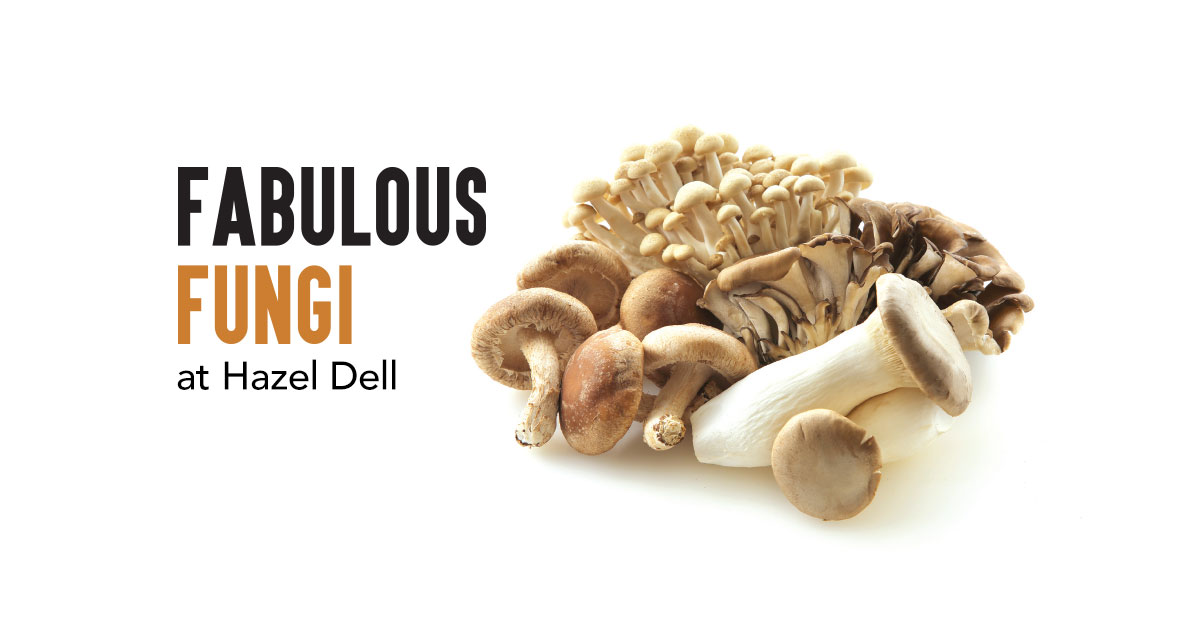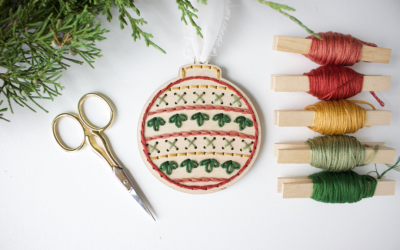By Kristin Owens | Photos by Kristin Owens
Shitake. Cremini. Lion’s mane. Oyster. Chanterelle. Colorado is home to a bona fide feast of mushroom varietals. From simple pizza toppings in the home kitchen to complete seasonal menus designed by local chefs, these superfoods raise the culinary bar and provide a welcome earthiness to the simplest of dishes.
Hazel Dell Mushrooms is a burgeoning enterprise located at the intersection of Carpenter Road and I-25. It supplies over 50 restaurants and supermarkets with delicious fungi. Sales continue to grow with a new storefront added last year.
Meet the mushroom man, Jared Sherger. He’s been cultivating and caring for mushrooms for 13 years. In September 2020, he became Hazel Dell’s owner and manager after Jim Hammond, his mentor and all-around mushroom expert, passed away. Now with his wife, Lucinda Womack, and a staff of 18 employees, Sherger grows an average of 4,000 pounds of certified-organic mushrooms a week.
All about the science
“People are fascinated by mushrooms,” Sherger says. Mostly, they ask him about the growing process. Sherger deals mostly in primary decomposers, fungi that feed on trees and dead plants. “We tend to think of mushrooms living in the forest, growing on old tree logs,” he says. Which happens in the wild, but cultivating mushrooms is an entirely different process. Think of it as a long, complicated biology lab in high school.
First, five to six pounds of substrate (a combination of nutrients, water and hardwood sawdust) is mixed and filled into plastic bags. The substrate holds 65 percent moisture content, which is vital for fungi growth. Then the bags are rolled on carts into an autoclave to be steam-sterilized for four hours. Next, off to a clean room called the ‘lockdown room,’ where they cool overnight.
Then mycelium, a.k.a. ‘mushroom spawn,’ is injected into the bags and sealed with a rubber band. Hazel Dell processes 1,600 bags daily. The bags are carted off to incubator rooms a second time. Inside, the fungi grow. And grow. And grow.
Reuse, recycle, repeat
The incubator rooms aren’t fancy. In fact, they’re old metal containers but they do the job brilliantly once outfitted with temperature controls and air circulation. Thirteen years ago, Hazel Dell had ten connexes. Today they have 50 completely full. Each holds 2,400 bags of a specific mushroom variety: all with unique heating and moisture requirements.
Inside, racks and racks of plastic bags are filled with what looks like stained cement. Sherger can identify what mushrooms are in each bag. “They have their own colors and characteristics,” he says. But still, each bag is labeled with batch number, date and inoculation. The mycelium actively works its way through the bag from the top to the bottom.
As the fungus grows, the mycelium produces a mushroom: basically, a fruit which produces more spores. Sherger calls it a “spore-making factory.” Shitake, their best seller, takes about four months to incubate at 70 to 75 degrees. Other varieties grow faster at four to six weeks. For lion’s mane, holes are punched in the top of the bag for the fruit body or mushroom to grow outward. Once the blocks mature, the temperature drops to 60 degrees and more humidity is added.
When caps open up, they’re ready to pick. Bags are transported to the harvest room, where staff cut mushrooms by hand off the now-hardened block of substrate. Next, bins are sent to a cool room to chill. Then they’re weighed, packaged and shipped by distributors or direct to restaurants. All of this is done without machines.
Sherger is big on recycling and reusing. The older blocks initially used to grow the mushrooms on, called ‘spent,’ are repurposed for nutrients. A portion is broken up and put back into a mixer with saw dust to create more substrate. Anything left over is used for garden compost and sold to customers. The cycle starts over. Ultimately, there is no waste.
So many ‘shrooms
With so many varieties, how do you pick? Womack explains cremini are the same as portabella, just younger, and they are more flavorful than button mushrooms, which people are most familiar with. Lion’s mane mushrooms have a similar taste and texture to seafood, buttery and rich. Shitake has a smoky flavor and the entire mushroom is edible. Womack says customers “can be intimidated by the more unusual-looking mushrooms,” so she recommends a mixed variety to experiment with different flavors and textures. When in doubt of how to cook, just sauté.
Mushrooms are a low-calorie food packed with vitamins, minerals and antioxidants. Rich in potassium, they lower blood pressure and boost immune systems. At Hazel Dell, mushrooms run $11/pound. And judging from their loyal customers, they are well worth it.
Chef-Seal of Approval
Chefs love local produce. Since they don’t have the longest shelf life, mushrooms on the menu show off their commitment to using fresh ingredients. From satisfying street food to five-star dining, and every dining experience in between, there’s always room for ‘shrooms.
At Rincon Argentino in Boulder, chef Christian Saber offers 15 different varieties of authentic empanadas. The ‘Hongo’ option is chockfull of Hazel Dell mushrooms (three different kinds) inside a flaky pastry. Garlic and fresh herbs add to the pocket of delectable goodness. The restaurant makes between 2,000 to 3,000 empanadas a day. Saber says, “Fresh ingredients make them special. The customers can taste the difference.”
Locality’s executive chef Jason Bush offers up mushrooms as a legit side not just as an afterthought garnish. The 8-oz filet with fancy fries, grilled cipollini onions and Hazel Dell mushrooms in a red wine reduction is a winner. The Fort Collins restaurant is only a few miles from the farm and you can always count on freshness.
Award-winning Chimney Park in Windsor is no slouch at showcasing only the best ingredients. Executive chef and owner Jason Shaeffer has used Hazel Dell since their 2007 opening. They’re always on the menu in some form; he uses 10 to 15 pounds a week in his restaurant. “Flavor and texture are the missing links in a savory dish, especially red meat,” says Shaeffer. For him, mushrooms also “bridge the gap with wine, providing an earthy character.”
DIY: Foraging
Fancy a hike through the woods for your own mushrooms? We asked Kristen and Trent Blizzard, certified Colorado wild mushroom identification experts based in Glenwood Springs, about foraging.
Wild mushrooms need moisture to thrive, so they’re very weather dependent. With all the rain this spring, “mushrooms will be happy,” says Kristen. Generally, spring mushrooms, like morels, need the warmth. Morels are elusive mushroom, hard to find and usually gone by summer.
Summer mushrooms like porcini (earthy and nutty) and chantarelles (fruity and apricotty) are iconic and typically found in mid-July. They’re also the easiest to identify. Successful foraging can run into September, if the moisture continues.
After last year’s epic forest fires, burn morels (morels that grow in areas burned by wildfire) will explode on the scene this year. They live dorment for decades in the trees, but after a fire they fruit for a three-year cycle, then disappear. “They are unique because as the season matures, they move up in elevation,” Kristen says. For the first few weeks in June, they’re found at 8,000 feet, and by August they are found at 10,000 feet.
The Blizzards travel to Oregon and California in the early spring, but their remaining foraging season is spent in Colorado. Especially with the recent burn sites, there are sure to be plenty of morels in 2021. From the western slope to the foothills, they have their favorite spots. Trent maps out burn sites with GPS coordinates for accuracy.
The Blizzards suggest the best way to get educated on foraging is join a local mycological society. They offer forays and an opportunity to go out with seasoned foragers and learn. Trent says, “It’s important to do your research first before showing up.”
For beginners, it can be overwhelming, as there are thousands of different varieties. He advises to just “learn two and look for those. Don’t worry about the other hundred you see.”
It’s important to arm yourself with information. “Never eat a mushroom you can’t identify with 100 percent certainty,” states Kristen. Research and forays will help your experience. “In no time a porcini will be as easy to identify as an apple is to an orange,” says Trent.
You don’t need much equipment to forage: a bucket or shopping bag and a knife. But Kristen admits, you can “get geeky on gear.” The Blizzards have walkie talkies, rain jackets, sturdy boots and a GPS to find the car. But still, it’s a wonderful hobby in wild, beautiful spaces where you can connect with nature. “It’s like hiking with a purpose,” Kristin says.
The Blizzards spend much of their time in their kitchen, figuring out how to eat mushrooms all year round. They dry and preserve. Dehydrate and store in glass jars. Freeze. Jerky. Even Pickle. For porcinis, they recommend dehydrating. Chantarelles? Cook a bit and then freeze. But when it comes to capturing wild mushrooms at their finest, fresh is always best. Simply slice and sauté in butter with salt. Delish.
Interested in foraging? Check out our resources below, then head to NAMA’s Annual Foray scheduled for August 12 to 15, at Snow Mountain Ranch near Granby.
ADDITIONAL FORAGING RESOURCES
Books:
“Wild Mushrooms” by Kristen and Trent Blizzard
“Mushrooms of the Rocky Mountain Region” by Vera Stucky Evenson and Denver Botanic Gardens
“The Essential Guide to Rocky Mountain Mushrooms“ by Cathy Cripps, Vera Evenson and Michael Kuo
Facebook Groups:
The Mushroom Identification Forum
Forage Colorado
Colorado Morel Mushroom Hunters
The Colorado Mycological Society
Websites:
ModernForager.com
The North American Mycological Society – namyco.org
Coloradomushrooms.com






